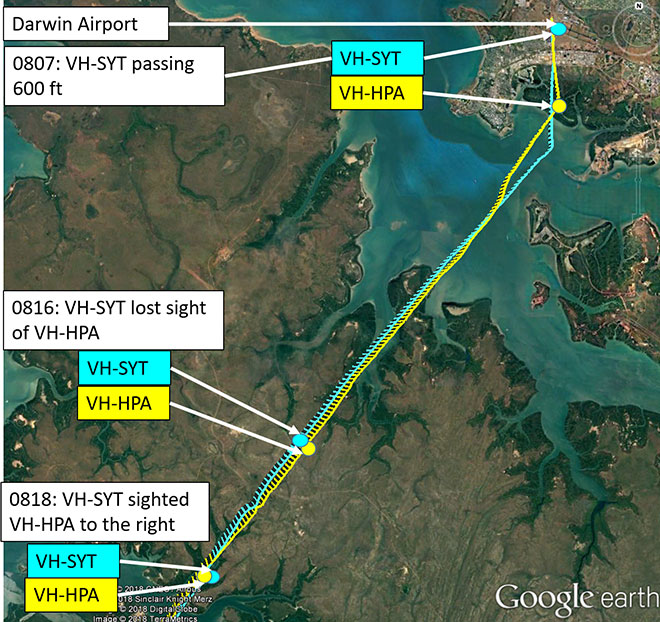The Australian Transport Safety Bureau (ATSB) is reminding pilots of the limitations of the see-and-avoid principle after two Cessnas were involved in a near collision south-west of Darwin Airport in 2017.
On 6 December, a Cessna 210 (VH-SYT) and a Cessna 206 (VH-HPA) departed Darwin Airport in quick succession bound for Port Keats. Both were charter flights operating under VFR and planned to track at 8500 feet. Each pilot was aware of the other aircraft and ATC had advised both pilots of each pilot’s plans.
The Cessna 210 was the trailing aircraft but was travelling faster than the C206. As the two aircraft converged, the pilot of the C206 lost sight of the other aircraft. The pilot advised ATC that the wing of his aircraft was obscuring his view but took no further action to ensure separation with the other aircraft.
The ATSB found the aircraft had come within 5 metres of each other as they passed. A safety alert was only issued by ATC after the near collision due to a combination of radar resolution and the inaccuracy of the displayed height of the C210.
While see-and-avoid is the primary way of preventing collisions between VFR aircraft, the limitations of this technique are well known.
The ATSB said, ‘this occurrence highlights the difficulties of the see-and-avoid principle, even when the pilot is given information about (or alerted to) the other aircraft’s position. Airborne collision avoidance systems (ACAS) technology can provide valuable information to alert pilots of other aircraft in their proximity and can direct the pilot to take avoiding action, thereby reducing the risk of collision.’
Flight Safety Australia looked at the limitations of see-and-avoid techniques last year in Unalerted see and avoid it’s not a good look and Be seen and be safe.



Comments are closed.